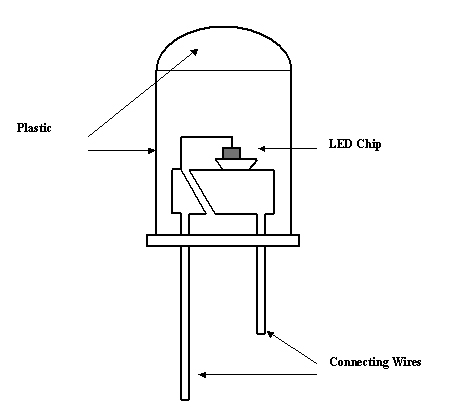
A modern light source that requires low voltages is the light emitting diode (LED). LEDs are typically used as on/off indicator lights in electrical appliances such as televisions, VCRs, video cameras, computers, and stereos. They are also used to display numbers in some alarm clocks, radios, and microwave ovens. Another use is very large video displays at concerts and sporting events. In the 1997 movie Batman & Robin, the Mr. Freeze costume worn by Arnold Schwarzenegger consisted of 3,800 blue LEDs for the purpose of illuminating his appearance. The low voltage requirements needed to operate LEDs as well as their small size and mass make them an attractive light source to use for these applications.
A diagram of the inside of an LED is shown below. The chip at the heart of the LED consists of two different solid materials that have been joined together. It is surrounded by a transparent, hard plastic that protects the LED from vibration and shock. The LED is constructed in such a way that the light emitted by the chip is reflected off the base it sits on and is focused through the top of the LED. Therefore, the LED is brightest at the top.

Examine the LED that you have been provided. Notice that the two
connecting wires have different lengths. These connecting wires
are attached to the chip by very thin wires inside the LED.